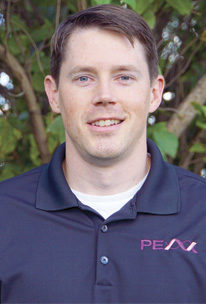At this year’s American Dairy Science Association annual meeting held in Pittsburgh, Pennsylvania, in June, several invited speakers presented ideas about how they saw the dairy industry in 50 years.
Michael VandeHaar, Jack Britt, Jon Cole, Jennie Pryce and Donagh Berry all gave talks in the Multidisciplinary and International Leadership Keynote Symposium entitled “The Dairy Cow in 50 Years.”
Dairy farms of the future
Jack Britt discussed his vision on what the dairy industry might need to do to meet the food requirements for the growing world population.
One thought was to use more integrated farms with efficient systems to manage specific sectors of the farm. Shared heifer growers already exist, but the idea could expand to include shared calves, transition facilities, dry cow facilities and feed centers.
A stronger focus on specialization would enable a more efficient workforce at each facility without an overinvestment in equipment. This specialization could also come with more robotic systems and monitors, generating data to better manage the farm, the cow and the environment.
Furthermore, investigating the interactions between the cow and her microbiome, the type of bacteria present in her rumen, uterus, mammary system, etc., could provide new management practices to increase productivity, fertility and longevity of the cow.
Selection indexes of the past, present and future
John Cole and Jennie Pryce discussed the past, present and potential future of genetic selection indexes in the U.S. and Australia, respectively. Both discussed how the traits included are critical to the commercial cow of the future.
Historic emphasis on milk yield led to a large increase in production but also a decline in fertility. Once fertility was added to each country’s selection index, the improvement in reproductive traits was noticeable.
Genomics now allows us to collect data on traits that are more expensive to monitor, such as feed efficiency, health data or milk composition data, from cows on specific co-operator farms. This genomic data could be used to predict these traits for the elite sires or heifers and help make genetic progress for the entire population.
As more traits are calculated, additional customized selection indexes could become available that more closely match diverse genotypes or environments. Custom selection indexes could also vary to provide a healthier final milk product based on whether the milk will be processed as fluid milk, cheese or butter.
Inbreeding in the genomic era
Jeremy Howard, Jennie Pryce, Ino Curik, Christian Sorensen, D.J. de Koning and Sophie Eaglen all gave talks for the symposium centered on how the calculations, depression estimations and management of inbreeding have progressed with the use of genomic data. Much the same as with breeding values, inbreeding can be calculated much more accurately with genome data. This information also provides new, exciting areas for research.
Howard has investigated whether two animals with similar genome-wide genetic and inbreeding values can be further discriminated in terms of genetic diversity and fitness. Howard has done this, in part, by focusing on region-specific inbreeding.
Howard’s team developed and tested their methods in Jersey cattle and two swine breeds. They found areas of the genome that, when inbred, negatively impacted important economic traits. They further studied these areas to determine which haplotypes caused the decline in performance.
By executing this process at many locations in the entire genome, they discovered numerous negative haplotypes, all with small impacts. For each animal, they could calculate the load of the negative haplotypes present in its genome.
Utilizing this load of negative haplotypes showed a greater ability to predict the negative effects of inbreeding than simply using either pedigree inbreeding or global genomic inbreeding measures. Furthermore, many of the locations that negatively impact one trait also negatively impacted other traits as well.
To make this effective in dairy cattle breeding, more research must be done to not only identify regions of the genome that negatively impact a trait when homozygous but also which haplotype at that region causes this decline.
Genetic dissection of bull fertility in dairy cattle
Francisco Peñagaricano and his graduate students, Yi Han and Paula Nicolini, have been working to unravel the genetic architecture of bull fertility. Most genetic selection for improved reproduction has been focused on female traits, such as daughter pregnancy rate.
A more phenotypic evaluation is used for sire fertility. The research presented here hopes to find mutations that can aid in the selection for more fertile sires prior to the bull producing semen.
A total of 44,449 sire conception rate records from 10,884 Holstein bulls available from the Council of Dairy Cattle Breeding were used for this analysis. These records included fertility evaluations from August 2008 through August 2016. Single-nucleotide polymorphism data was provided by the Cooperative Dairy DNA Repository and included 60,671 markers.
Several genomic regions were discovered to have a strong impact on sire conception rate, with most of these regions harboring genes with functions relating to sperm development, motility and sperm-egg interactions. Some regions also showed the presence of dominance effects, providing evidence for the importance of non-additive effects in fitness traits. ![]()

-
Doug Bjelland
- PEAK Geneticist
- Alta Genetics
- Email Doug Bjelland






